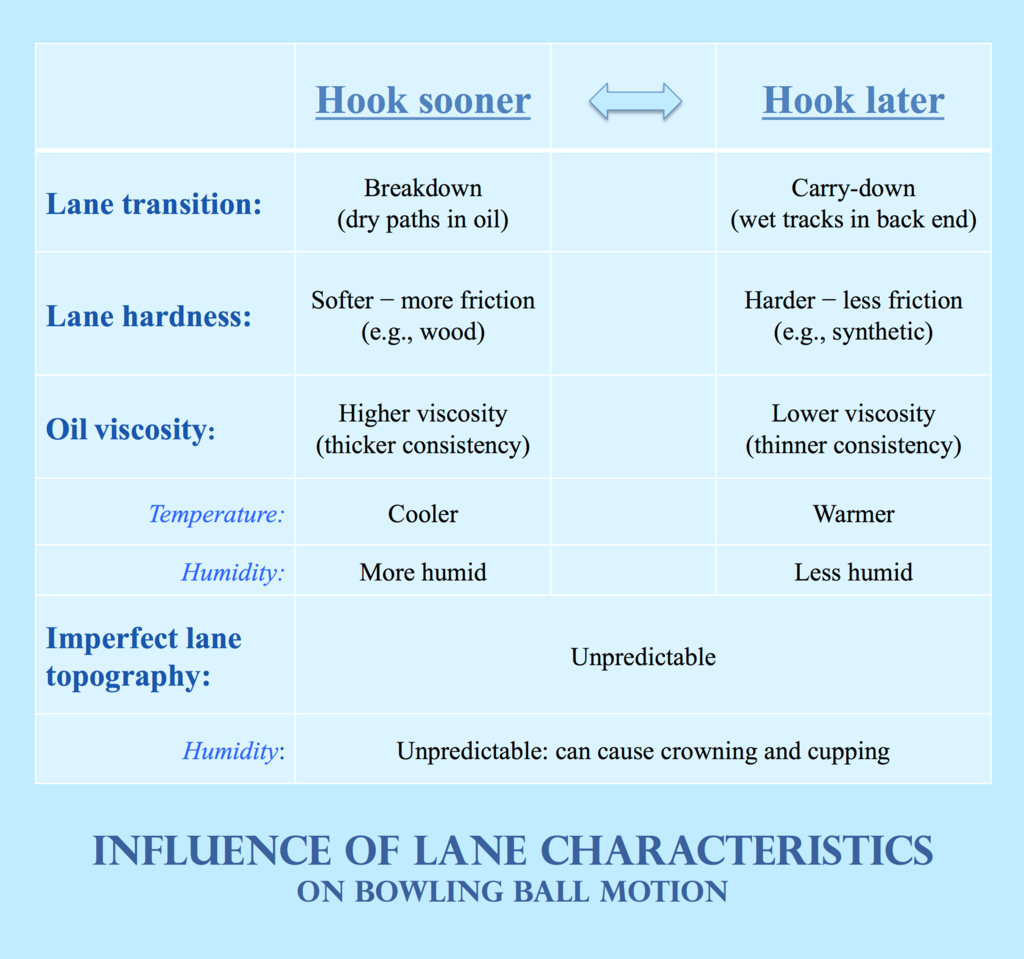Bowling ball motion can be a deceptively complex concept due to the myriad of factors affecting it.
Oil patterns are of course a topic deserving of much analysis on their own; where the oil is and how much is applied will greatly affect how your ball will or won’t hook. But the revolution in bowling ball materials like cores and coverstocks have added new layers of complexity to the question of ball motion. And then lane transition results in new changes later on in your bowling session, alongside other factors that are often left out.
Today we’re going to share a new resource we found that helps make much of this question a little easier.
In the graphic below, you can see a helpful analysis of how different lane characteristics affect the ball’s hook.
You’ll see a number of key terms that are important for any serious bowler to understand, such as breakdown, carrydown, lane hardness, and oil viscosity. Others, like temperature and humidity, are things that many bowlers have never considered.

For a more formal or academic take on this same topic, you can read this paper which shares the results of a USBC ball motion study.
And for more on our website, take a look at our articles on oil patterns and lane conditions and our other one on lane transition.
Source: Wikimedia commons


Leave a Reply